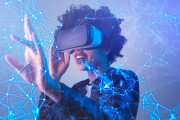 2021-08-04
2021-08-04
Technological advances have given rise to numerous ultra-advanced display technologies that shine in different fields. Micro OLED, known as a fusion of semiconductor and OLED technologies, allows displays to be thinner and more energy saving. Particularly, the application of Micro OLED in AR/VR is highly promising, but what is the difference between this novel technology and the aforementioned Micro LED?
Before comparing the two technologies, we should first know what exactly OLED is and whether Micro OLEDs are simply miniatures of OLEDs.
OLE...
Continue reading →
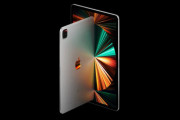 2021-08-03
2021-08-03
Engineered with the latest Mini LED technology, the new iPad Pro was finally unveiled earlier this year, suggesting that Apple, the consumer electronics trendsetter, has again applied an innovative technology to its products and that the year 2021 marks the start of Mini LED commercialization. TrendForce forecasts that the value of Mini LED chips in backlight TV application alone will reach US$270 million in 2021. (Image source: Apple) Mini LED commercialization puts the Taiwanese optoelectronics industry—which has suffered from over...
Continue reading →
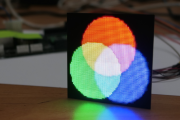 2021-08-02
2021-08-02
As LCD technologies advance, you may often hear about words like LCD, LED, OLED, as well as popular display techniques using Micro LEDs, Mini LEDs, and Micro OLEDs. Have you ever tried to figure out these confusing terms but still don’t have any clue about them? Here’, we’ll explain the said trendy technologies—in simple words—and compare them to older technologies, so that you can quickly grasp their main ideas. What’s the Difference between LCD, LED, and OLED? LCD stands for a “liqui...
Continue reading →
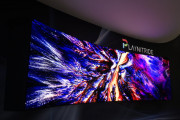 2021-07-29
2021-07-29
Micro LED has recently been a high-profile emerging technology in the display industry, where overcoming the existing technical challenges for mass production are the ultimate goal shared by businesses. In Touch Taiwan 2021, leading players such as AUO, Innolux, and PlayNitride flexed their muscles by showcasing various innovative Micro LED applications. In addition to bringing stunning visual experiences, the upstream–downstream partnerships seen in the display event suggests that Micro LED is no longer a “science-fiction” and has stepped closer to th...
Continue reading →
 2021-07-28
2021-07-28
Micro LEDs as a light source has been an advanced technology under the spotlight in the display industry. Numerous Micro LED products were unveiled in the Touch Taiwan exhibition this year. Specifically, AUO, Innolux, and PlayNitride all presented their Micro LED development results, demonstrating the companies’ strategies of strengthening upstream–downstream alliances as well as their determination to overcome the existing technical challenges. As a promising display approach, the Micro LED technology not only creates better visual experiences but...
Continue reading →
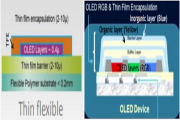 2018-05-02
2018-05-02
With the increased demand for OLED based touchscreens, electronic manufactures are increasingly turning to UV LED curing solution providers for its many benefits in bonding applications for OLED flat panel manufacturing. Benefits to manufacturers include high productivity, environmentally safe and friendly, and a reliable solution to how these products are cured.
Continue reading →
 2018-04-10
2018-04-10
Selecting a smart lighting system can be daunting partly because you need to have a basic understanding of networking. How will the luminaires, sensors and controls connect and reliably communicate with each other on your smart lighting network?
Continue reading →
 2018-04-09
2018-04-09
The term ‘Internet of Things’ is a growing topic of conversation. What exactly is the Internet of Things (IoT) and what does smart lighting have to do with it?
Continue reading →
 2018-04-09
2018-04-09
How often have we heard a frazzled parent explain a teenager’s irritable mood on lack of sleep? We all know that sleep plays a critical role in our mood and our levels of concentration and alertness. Through numerous research studies, we now know that quality of sleep also affects long-term health and overall wellbeing. Poor sleep is linked to physical problems such as a weakened immune system and mental health problems such as anxiety and depression.
Continue reading →
 2018-04-09
2018-04-09
Further studies have shown that children studying in classrooms that receive a high level of daylight — either naturally or replicated with full spectrum lighting — achieve better results than those receiving little or no natural light. The resulting increase in performance was as much as 26% in reading and 20% for maths — a significant improvement from a relatively simple adjustment to the learning environment.
Continue reading →
 2018-02-22
2018-02-22
The human body reacts to sunlight and darkness by releasing hormones that direct our internal clock, known as our circadian system. Disturbing our internal clock can affect our ability to perform or concentrate and literally puts us at risk for a host of diseases. Recent research indicates that building occupants’ circadian rhythm can be disturbed when they spend long hours indoors without access to the Earth’s natural lighting cycle.
Continue reading →
 2018-02-21
2018-02-21
Some people believe that wireless cannot go the distance for large commercial lighting applications. That is not true. Even with the widespread usage of wireless networks, it is still amazing that there are so many myths about them. That is not a surprise since not everybody has strong IT knowledge. After all, IT can be quite complicated.
Continue reading →
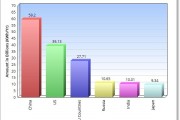 2018-02-12
2018-02-12
The world leaders have eventually agreed to the point of energy efficiency and advised to take necessary steps to work together on the specific fact of concern. Many developed and developing countries have started to apply energy efficiency as shapes of attractive features of energy schemes and incentives.
Continue reading →
 2018-01-29
2018-01-29
The light emitted by portable electronic devices (PEDs), particularly when used at night, has drawn a great deal of interest among sleep researchers, healthcare professionals, and the media. Research shows that exposure to light at night (LAN) may be associated with poor sleep and may lead to diminished alertness and performance throughout the day. Exposure to LAN can also acutely suppress melatonin, a hormone produced at night and in darkness, which tells the body it is nighttime. The short-wavelength “blue” light emitted by electronics can be especially disruptive to melatonin production, and the proximity to the eye when PEDs are in use only aggravates the threat to getting a good night’s sleep.
Continue reading →
 2017-11-28
2017-11-28
A recent study led by Christopher Kyba from the GFZ German Research Centre shows artificially lit outdoor surfaces grew at an annual rate of 2.2% between 2012 and 2016. The fact that the world is transitioning to LED lighting so as to run away from pollution caused by traditional lighting is raising another type of environmental concern— light pollution.
Continue reading →
 2017-11-24
2017-11-24
Municipalities, enterprises, and households are switching to LED lights in order to save energy. But these savings might be lost if their neighbours install new or brighter lamps.
Continue reading →
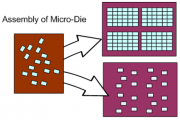 2017-11-23
2017-11-23
Inorganic microLEDs are the next big thing in displays, not as backlights for LCDs, but like OLEDs, as the actual light emitting pixel elements, ranging from applications in Micro-displays for Augmented /Virtual Reality (AR/VR) to wearables such as Smartwatches and Cellphones. Unlike OLED displays, however, they are far more robust and long-lived, and most importantly, far more efficient and much brighter, making them viable even for larger displays, such as video walls in advertising and in cinema in place of projection. But to make the technology cost effective, manufacturing challenges abound, particularly as pixel sizes shrink in next generation micro-displays. For example, various coatings must be rapidly deposited in a precise, controlled manner, such as the Quantum Dots (QDs) integrated with the LEDs used in larger displays either to sharpen the color characteristics of traditional phosphors, or fully replace them in micro-displays, relying solely on QDs for color conversion. Better technology is needed for reliably depositing the various costly materials used, and even for rapidly assembling or arraying the microLEDs themselves.
Continue reading →
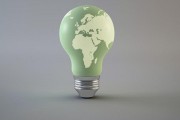 2017-11-20
2017-11-20
Developing and emerging economies could save $40 billion worth of electricity and prevent 320 million metric tonnes of carbon pollution annually simply by transitioning to LED lighting, according to estimates from United Nation’s Environment.
Continue reading →
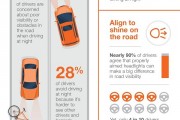 2017-11-07
2017-11-07
A new survey released today from SYLVANIA Automotive found that drivers are aware that headlights dim and wear over time, but most of those drivers do not take steps to proactively maintain their vehicle’s headlights.
Continue reading →
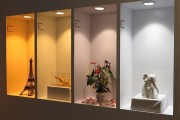 2017-10-23
2017-10-23
Thinking of upgrading your lighting? Don’t do anything until you’ve checked out the 10 mistakes that most people make with new LED lighting.
Continue reading →
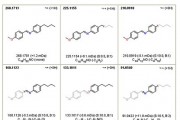 2017-10-17
2017-10-17
The difference between displays from one LCD manufacturer to another can often be traced to the LC materials used and the impurity control level employed in the manufacturing process. To stay ahead of the completion, LCD makers constantly strive to improve product performance by minimizing degradation factors, controlling impurity levels in the LC materials, and exploring methods to develop new and better products.
Continue reading →
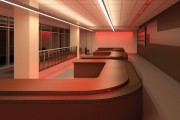 2017-10-17
2017-10-17
Two key physical properties of light participate in color vision: wavelength and power. They factor into a light source’s spectral power distribution, which describes the amount of light power at each wavelength in the visible spectrum (which ranges from approximately 380 nanometers to 780 nanometers) that is emitted by that particular source. Power is a measure of the amount of light from each wavelength that arrives at a defined location per unit time.
Continue reading →
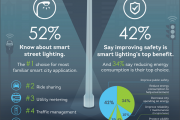 2017-10-12
2017-10-12
At Smart Cities Week, Silver Spring Networks, Inc. and Power Over Energy unveiled the findings from their Smart Cities Consumer Research Study, conducted with the U.S. Department of Energy Office of Electricity Delivery and Energy Reliability Advanced Grid Research. More than 500 U.S. consumers took part in the online study.Respondents were representative of the U.S. Census, ranging from ages 18 to 65+ (52% female, 48% male), and from all areas of the country including New England, Mid Atlantic, Mountain, Pacific, South East, and various areas of the central U.S. A majority of respondents (47%) lived in cities with populations of more than 100,000, 14% of which currently reside in major metropolitan areas of more than one million people.
Continue reading →
 2017-10-12
2017-10-12
A research project conducted by Twente University, The Free University Amsterdam and the property consultant CBRE Holland once again confirms the interplay between work surroundings and health as well as the well-being and performance capacity of people. Osram installed a “Human Centric Lighting” solution for the survey at the headquarters of CBRE in Amsterdam – consisting of a time-controlled lighting system with a circadian-friendly lighting sequence. The results verify: 76 percent of participants felt happier, 50 percent healthier and 12 percent performed better in an objective experiment.
Continue reading →
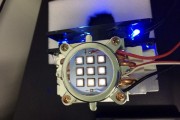 2017-10-11
2017-10-11
On 30th September 2017, Qingdao Jason Electric Ltd Co., one of major UV-C LEDs manufacture in the world, announced that they have successfully demonstrated 1000mW class high output power 275nm UV-C LEDs lamp. This research achievement has been attributed to their recent years’ progress on the production of 10mW UV-C LEDs with 10000hrs lifetime, and 100mW 6868 size packaged high power module for the flow water disinfection unit. The 1000mW lamp is made of total 9 6868 packaged LEDs connected by 3x3 array, as shown in figure 1.
Continue reading →
 2017-09-26
2017-09-26
Businesses around the world could realize savings of up to USD 1.5 trillion in reduced rental costs alone if their office buildings were refurbished to the most efficient standards of today, according to a new analysis from Philips Lighting.
Continue reading →
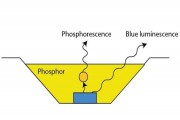 2017-09-22
2017-09-22
White LEDs can be made even more efficient and powerful, photonics researchers of the University of Twente and Philips Lighting now prove. They found a detailed way for describing the light that stays inside the LED by absorption and scattering. This is very valuable information for the design process.
Continue reading →
 2017-09-12
2017-09-12
Most homeowners waste energy in little ways that add up big time on their monthly utility bills. Using a laptop instead of a desktop computer, unplugging devices not in use and simply switching to LED light bulbs are a few changes that can add more pocket change to the monthly bottom line.
Continue reading →
 2017-08-31
2017-08-31
Lighting is complicated. From Lumens to Watts to kelvins, it’s often challenging to confidently choose the ideal bulb for your home. Now, in the era of “smart,” things seem to get even more complicated - so much so that consumers sometimes avoid adoption all together and miss the many benefits LEDs have to offer. The following infographic highlights the differences between CFL bulbs and (smart) LED bulbs, from lengthof life to dimmer compatibility. The smart LED highlighted is Sengled’s Element Plus.
Continue reading →
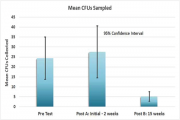 2017-08-14
2017-08-14
A Research from Open Forum Infectious Diseases (OFID) has shown that Vital Vio’s VioSafe™ White Light Disinfection™ technology has a sustained impact on bacterial reduction on high touch surfaces in interior environments, including in a medical trauma room.
Continue reading →
 2021-08-04
2021-08-04
 2021-08-03
2021-08-03
 2021-08-02
2021-08-02
 2021-07-29
2021-07-29
 2021-07-28
2021-07-28
 2018-04-10
2018-04-10
 2018-04-09
2018-04-09
 2018-04-09
2018-04-09
 2018-04-09
2018-04-09
 2018-02-22
2018-02-22
 2018-02-21
2018-02-21
 2018-02-12
2018-02-12
 2018-01-29
2018-01-29
 2017-11-28
2017-11-28
 2017-11-24
2017-11-24
 2017-11-20
2017-11-20
 2017-11-07
2017-11-07
 2017-10-17
2017-10-17
 2017-10-17
2017-10-17
 2017-10-12
2017-10-12
 2017-10-11
2017-10-11
 2017-09-26
2017-09-26
 2017-09-22
2017-09-22
 2017-09-12
2017-09-12
 2017-08-31
2017-08-31
 2017-08-14
2017-08-14